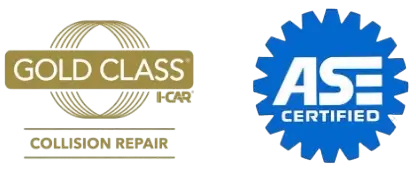Understanding Collision Repair Technicians and Damage Analysis
Many vehicle owners become overwhelmed after experiencing a car crash. While the initial shock is understandable, it is necessary to get your vehicle repaired as soon as possible to avoid any further inconvenience and to address any underlying issues. Take your car to a reputable auto collision service in Pennsylvania. Trusting your vehicle with experienced and certified collision repair technicians means you can feel safe when they return your vehicle. The collision repair process starts before the repair with accurate analysis and inspection.
Damage Analysis
Collision experts will perform a damage analysis on your vehicle, but to do so, they must understand the relationship of all parts to the modern automobile. Therefore, collision experts are familiar with current manufacturers and measurements. Knowing that structural components and control points account for the placement of the interior and mechanical systems makes it easier to determine the extent of damage and the forces of the accident. For example, head-on collisions often result in a shortening of the body length, while rollover changes the height. Understanding impact points and collision actions, means repair technicians know how to inspect the vehicle. There are three primary forms of damage.
- Primary: This form of damage involves the impact point, or the area affected the most by the crash. The worst of the damage is typically a result of the primary contact point because it directly absorbs the full force of the collision. However, depending on the severity of the accident, repair technicians may find evidence of multiple primary forms of damage. For example, a multi-car pileup or a rollover can have more than one direct point of contact.
- Indirect: While primary damage can result in the crushing or collapse of a panel or part of the body, indirect damage relates to the issues stemming from the initial breaks. For example, when a front fender shifts during the main impact causing damage to the door panel, that is indirect damage. While the collision caused the damage, it was actually the failure of structural elements that resulted in the secondary loss.
- Hidden: This form of damage is hard to see and identify because it is not readily apparent. A collision may result in misalignment of specific parts. It is also possible that the deployment of airbags affected other electrical components in the vehicle. Many manufacturers actually recommend replacing the entire dash when both the driver and passenger airbags deploy. Significant wreckages also relate to suspension issues.
Inspection
Experienced repair technicians understand damage analysis, and they will ensure that their inspections follow the appropriate guidelines of manufacturers. Also, these highly-skilled technicians will go beyond cosmetic issues, reviewing the connection points and operations of all vital systems. While an inspection will likely start from the primary impact point, following with the secondary sites and hidden issues, most technicians will survey four primary areas of the auto body to rule out other problems.
- Fenders and bumpers: After a collision, it is common to find bumper and fender damage. Manufacturers design these components to absorb a significant portion of the impact. Since lightweight materials make up the fenders and bumpers and cars, they are often repaired easily without being too expensive. However, if a repair technician finds cracks or scratches that appear too severe, they may suggest you replace these parts for new, ensuring future absorption and protection.
- Windshield: Many people do not realize the importance of a windshield, other than the implications of the name. However, beyond wind protection, the windshield is a structural support for your vehicle’s roof. If it is damaged in a collision, then another accident could cause the entire roof to collapse. You may look at your windshield and not see any cracks, but a technician can find weak points that you may not see. They will replace the windshield, protecting you from potential harm in the future.
- Door panels: Sometimes, the damage to your vehicle is not immediately noticeable. For example, door panels often seem OK after an accident, but it does not take long to notice misalignment issues and gaps. The damage to the panel may not require a replacement, but only a collision repair professional can inform you of the extent of the damage.
- Chassis: It is not uncommon for the entire alignment of the vehicle to be thrown off kilter during an accident, even minor fender benders. The chassis is a single component, and every significant part resides within its frame or on top of it. Car accidents often result in the need for substantial repairs to the body, and restructuring the chassis, may be part of that necessity.
Sometimes, the damage to your car after an accident is not immediately visible, but you should still get it into a collision shop. Let experienced repair technicians at Tachoir Auto Body perform a damage analysis, inspecting and repairing your car, so it is safe to drive.

